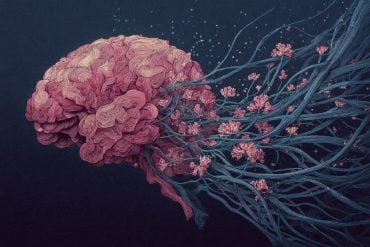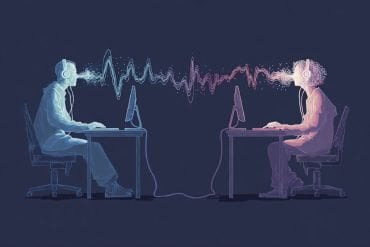Summary: Experiencing trauma or extreme stress during childhood can lead to structural changes in the hippocampus and amygdala that can be seen decades later.
Source: University of Alberta
A new study from University of Alberta researchers has shown that traumatic or stressful events in childhood may lead to tiny changes in key brain structures that can now be identified decades later.
The study is the first to show that trauma or maltreatment during a child’s early years–a well-known risk factor for developing mental health conditions such as major depressive disorder in adulthood–triggers changes in specific subregions of the amygdala and the hippocampus.
Once these changes occur, researchers believe the affected regions of the brain may not function as well, potentially increasing the risk of developing mental health disorders as adults during times of stress.
“Now that we can actually identify which specific sub-regions of the amygdala or the hippocampus are permanently altered by incidents of childhood abuse, trauma or mistreatment, we can start to focus on how to mitigate or even potentially reverse these changes,” said Peter Silverstone, interim chair of the Department of Psychiatry and one of a team of eight U of A researchers who conducted the study.
A total of 35 participants with major depressive disorder were recruited for the study, including 12 males and 23 premenopausal females aged 18 to 49 years. Researchers also recruited 35 healthy control subjects, including 12 males and 23 females who were matched by age, sex and education.

“This may help shed some light on how promising new treatments such as psychedelics work, since there is mounting evidence to suggest they may increase nerve regrowth in these areas. Understanding the specific structural and neurochemical brain changes that underlie mental health disorders is a crucial step toward developing potential new treatments for these conditions, which have only increased since the onset of the COVID-19 pandemic,” said Silverstone, who is also a member of the U of A’s Neuroscience and Mental Health Institute.
The study noted that previously “most of the work on the effect of stress on the amygdala and hippocampal substructures has been conducted in animals,” and direct testing of preclinical stress models in humans has been impossible to date. However, “recent advances in high-resolution MRI (magnetic resonance imaging) of the hippocampal subfields and amygdala subnuclei have allowed researchers to test these models in vivo in humans for the first time.”
Once these biological changes occur in stress-related brain structures, researchers say the affected regions of the brain may become “maladaptive” or dysfunctional when people deal with adult stresses, making them “more vulnerable” to developing depression or other psychiatric disorders as adults.
The amygdala and hippocampus are regarded as targets of childhood adversity “because they exhibit protracted postnatal development, a high density of glucocorticoid receptors and postnatal neurogenesis,” the study notes. “(This) study confirmed the negative effects of childhood adversity on the right amygdala and suggested that these effects might also affect the basolateral amygdala.”
About this trauma and brain development research news
Source: University of Alberta
Contact: Ross Neitz – University of Alberta
Image: The image is in the public domain
Original Research: Closed access.
“Effects of childhood adversity on the volumes of the amygdala subnuclei and hippocampal subfields in individuals with major depressive disorder” by A. Aghamohammadi-Sereshki, N. J. Coupland, P. H. Silverstone, Y. Huang, K. M. Hegadoren, R. Carter, P. Seres, N. V. Malykhin. Journal of Psychiatry & Neuroscience
Abstract
Effects of childhood adversity on the volumes of the amygdala subnuclei and hippocampal subfields in individuals with major depressive disorder
Background: Reductions in total hippocampus volume have frequently been reported in MRI studies in major depressive disorder (MDD), but reports of differences in total amygdala volume have been inconsistent. Childhood maltreatment is an important risk factor for MDD in adulthood and may affect the volume of the hippocampus and amygdala. In the present study, we examined associations between the volumes of the amygdala subnuclei and hippocampal subfields and history of childhood maltreatment in participants with MDD.
Methods: We recruited 35 patients who met the DSM-IV criteria for MDD and 35 healthy controls. We acquired MRI data sets on a 4.7 T Varian Inova scanner. We manually delineated the amygdala subnuclei (lateral, basal and accessory basal nuclei, and the cortical and centromedial groups) and hippocampal subfields (cornu ammonis, subiculum and dentate gyrus) using reliable volumetric methods. We assessed childhood maltreatment using the Childhood Trauma Questionnaire in participants with MDD.
Results: In participants with MDD, a history of childhood maltreatment had significant negative associations with volume in the right amygdala, anterior hippocampus and total cornu ammonis subfield bilaterally. For volumes of the amygdala subnuclei, such effects were limited to the basal, accessory basal and cortical subnuclei in the right hemisphere, but they did not survive correction for multiple comparisons. We did not find significant effects of MDD or antidepressant treatment on volumes of the amygdala subnuclei.
Limitations: Our study was a cross-sectional study.
Conclusion: Our results provide evidence of negative associations between history of childhood maltreatment and volumes of medial temporal lobe structures in participants with MDD. This may help to identify potential mechanisms by which maltreatment leads to clinical impacts.







